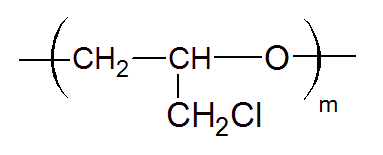ECO - Epichlorohydrin Rubber
Properties
Epichlorohydrin rubber (ECO) is a synthetic specialty elastomer produced by ring-opening copolymerization of chloromethyloxirane (epichlorhydrin) and oxirane (ethylene oxide). It has properties very similar to nitrile rubber but it has better heat and ozone resistance and improved low temperature flexibility. ECO’s possess also very low gas permeability, excellent weather resistance, good compression set and good heat and mineral oil resistance. Its resistance to hydrogen peroxides, ozone and alkalis is also good or excellent.

However, epichlorohydrin rubbers are unsuitable for use with (wet) chlorine, strong acids and many common polar solvents such as alcohols, amines, esters, ketones, and phosphate ester-based hydraulic fluids. Some other limitations include poor electrical properties, low abrasion resistance and only moderate low-temperature flexibility.
COMMERCIAL ECO Elastomers
Important manufacturers and suppliers of ECO rubbers are Zeon, and Osaka Soda.
Applications
Epichlorohydrin elastomers are widely used in the automotive industry for seals, hoses, gaskets, O-rings, cable jackets, and belts. ECO's are also an important ingredient of rubber glues. However, they are unsuitable for rubber to metal bonding because of their corrosiveness to metals.
The typical working temperature range is -35°C to +120°C (150°C short term).